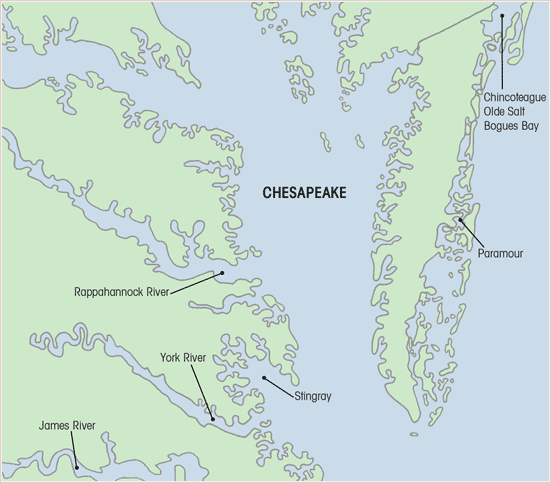Chesapeake
Once upon a time, the Chesapeake Bay was the Napa Valley of oysters. Oysters flourished so thickly along its fractured coasts and warm waters that they presented a shipping hazard, and they grew plump and sweet—famously sweet. A quick glance at a U.S. map makes it obvious that the Chesapeake Bay—the nation’s largest estuary—is like no other in the country. With the Eastern Shore of Maryland and Virginia keeping the Atlantic firmly at bay, with a relatively small inlet to the south, and with the rivers of Appalachia—Susquehanna, Potomac, Rappahannock, James—pouring vast quantities of fresh water into the bay (quadruple that of the Connecticut or Hudson Rivers, the next largest), the Chesapeake was an immense basin of the kind of medium-salinity water that could keep billions of oysters very, very happy. For two centuries the local oystermen ransacked it with the control and forethought people have always used with “inexhaustible” resources—which is to say, none. Today, there are virtually no more wild oysters to harvest. All the best Chesapeake oysters come from aquaculture operations in Virginia.

